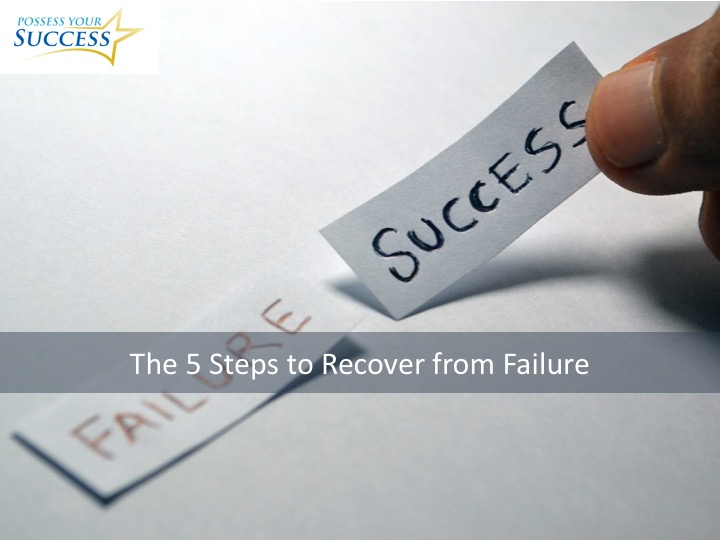The 5 Steps to Recover from Failure

Success is a journey, not a destination.
And along that journey, you’ll inevitably encounter failures. They may seem like obstacles or deterrents holding you back or discouraging you from your goals, but in actuality, they are merely stepping stones on your path to success.
Sadly enough, not many people see it that way. Failure in our cultures are shamed instead of celebrated. Even scientists and doctors would rather lie in order to cover their failures, something I discuss in my book Possess Your Success.
However, I firmly believe that as long as you aren’t making the same mistakes multiple times without attempting to change, you will be making progress.
Think of it this way: Success is like working out. When you work out, you are actually tearing apart and breaking down muscles in your body until the point of muscle failure. However, you don’t stop there. You rest, recover, and work them out again, making those muscles stronger and stronger until you have your breakthrough (in this case, goal achievement). At that point, you add more weight and repeat the muscle-building process.
Unfortunately, it doesn’t change the fact that failure is embarrassing and painful. Following the workout analogy, after a good workout your muscles will be pretty sore, right?
Thus, I’ve created 5 steps to help you to recover from failure faster and more effectively.
1. Embrace it and own it. This is something many people miss when first recovering from failure. Most want to blame others or external circumstances for their failures. The ones at fault do not matter; the only thing that does is the fact that you failed. Be at peace with this and you will be able to move forward much quicker.
2. Do a post-mortem analysis. Now that you’ve accepted the fact that you’ve failed, it’s time to truly understand why. Write down what went right, what went wrong, and the circumstances that led to your failure. Again, it’s not about placing blame, but understanding the chain of events that led to your failure.
3. Determine lessons learned. At this point, it’s time to figure out what you can do next time (if anything) to ensure that this failure doesn’t happen again. What was in your control? What could you have done differently? If the issue lies with someone else, maybe you’ll need to train that person better or find someone else entirely! Of course, there are freak accidents (such as bad weather ruining your outdoor event) that you can’t account for. But try to find as many fixable things as possible.
4. Figure out next steps. Where will you go from here? Will you try again, or will you quit? This is a critical juncture, because sometimes the answer is not always “try again”. There are times where you will have to pivot to another idea, product, or service if your previous attempts failed. However, if you are going to move forward….
5. Get back on the horse and try it again. Don’t let fear or your previous failure prevent you from moving forward just by their own merits. The quitting route should only be determined by your post-mortem AND whether your heart’s in it. Otherwise, adopt a Thomas Edison mindset. According to legend, he failed 10,000 times before he successfully created a working light bulb. When asked about all his failures, he explained that he didn’t fail; he simply found 9,999 ways a light bulb won’t work.
Now, if you need some help finding the motivation to get back on that horse, I have a guide that I’m working on right now. To get early access, click here.
